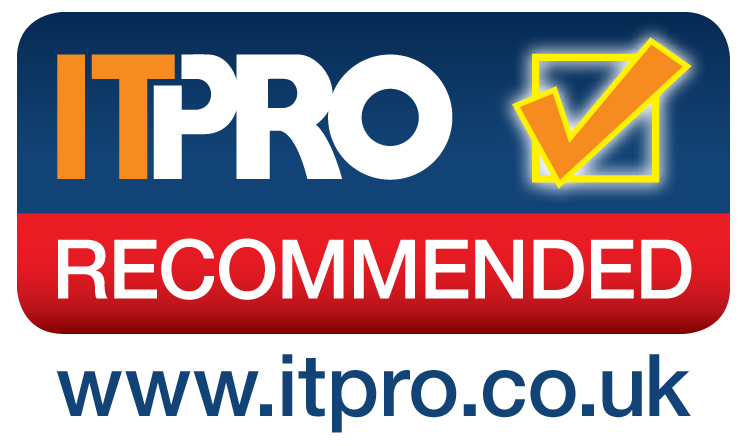Canon ImageFormula DR-C125 review
Fast, high-quality sheet-fed desktop scanners don't have to be eye wateringly expensive as Simon Handby finds out with Canon's latest model.
The ImageFormula DR-C125's compact and clever design makes it an easy scanner to live with, but that's only half the story. Paired with Canon's new CaptureOnTouch software the DR-C125 is adept at rapidly capturing and processing documents, helping users turn out consistent and predictable high-quality scans with the minimum of input or support. If you need an affordable desktop document scanner, this is one you can simply deploy and forget about.


Canon's new ImageFormula DR-C125 is an A4 document scanner designed for the desktop of anyone who needs regularly to capture multiple-page documents. With a dedicated host PC, it would also be at home serving low-volume demands in a workgroup. It has a remarkably small footprint that's no bigger than a typical VoIP desk phone, achieved with what Canon says is a unique vertical 'J' paper path.
Sheet-fed scanners don't come all that much cheaper than the DR-C125, but the new ImageFormula's specifications are better than you might expect at the price. It's a duplex colour device with a 600dpi optical resolution, ultrasonic sensors for detecting when more than one sheet has been fed into the scanner (known as ultrasonic double-feed detection) and a reasonable 1,500-page daily duty cycle plenty for the intended application. It's rapid, too, with a claimed 25 page-per-minute and 50 image-per-minute maximum speed.
Canon has clearly worked hard to make the DR-C125 as easy as possible to share desk space with.
Canon has clearly worked hard to make the DR-C125 as easy as possible to share desk space with. The upright design includes clips for tidying up excess cable lengths, and the shallow footprint means it can sit unobtrusively behind other items on a desk although the extending paper guides atop the input tray mean that you can't quite place it flush against a wall or partition at the back.
Depending which font you're thinking of, we'd say that the scanner's paper path is more 'U' than 'J' shaped. Sheets are pulled through a conventional input and pass through a 180-degree turn with a radius of about an inch before being deposited in the output tray, which lies parallel to the input. There's a flip-switch to enable a straight path for special media, but the 60-degree tray angle means that this is only truly straight when the scanner is placed at the very front edge of a surface, allowing paper to fall to the floor.
Sign up today and you will receive a free copy of our Future Focus 2025 report - the leading guidance on AI, cybersecurity and other IT challenges as per 700+ senior executives
After a brief career in corporate IT, Simon Handby combined his love of technology and writing when he made the move to Computer Shopper magazine. As a technology reviewer he's since tested everything from routers and switches, to smart air fryers and doorbells, and covered technology such as EVs, TVs, solar power and the singularity.
During more than 15 years as Shopper's long-time printer reviewer, Simon tried, tested and wrote up literally hundreds of home, small office and workgroup printers. He continues reviewing smart products and printers for a variety of publications, and has been an IT Pro contributor since 2010. Simon is almost never happier than when surrounded by printers and paper, applying his stopwatch and a seasoned eye to find the best performing, best value products for business users.
-
 ‘1 engineer, 1 month, 1 million lines of code’: Microsoft wants to replace C and C++ code with Rust by 2030 – but a senior engineer insists the company has no plans on using AI to rewrite Windows source code
‘1 engineer, 1 month, 1 million lines of code’: Microsoft wants to replace C and C++ code with Rust by 2030 – but a senior engineer insists the company has no plans on using AI to rewrite Windows source codeNews Windows won’t be rewritten in Rust using AI, according to a senior Microsoft engineer, but the company still has bold plans for embracing the popular programming language
By Ross Kelly Published
-
 Google drops $4.75bn on data center and energy firm Intersect
Google drops $4.75bn on data center and energy firm IntersectNews The investment marks the latest move from Google to boost its infrastructure sustainability credentials
By Nicole Kobie Published
-
 OpenAI says prompt injection attacks are a serious threat for AI browsers – and it’s a problem that’s ‘unlikely to ever be fully solved'
OpenAI says prompt injection attacks are a serious threat for AI browsers – and it’s a problem that’s ‘unlikely to ever be fully solved'News OpenAI details efforts to protect ChatGPT Atlas against prompt injection attacks
By Nicole Kobie Published
